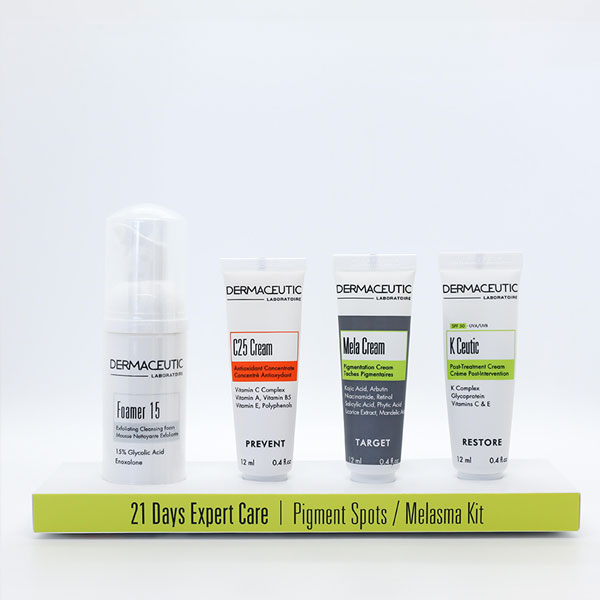PDT or photodynamic therapy is a non-surgical treatment for superficial skin cancers & solar keratosis. Queensland dermatologists have been instrumental in the initial research & development on PDT over 2 decades ago. This treatment has a shorter downtime compared to traditional Efudix therapy.
Photodynamic Therapy – PDT at a glance
我们的结果不言自明

Before
After

Photodynamic Therapy can treat IEC &
superficial BCCs. 2 sessions spaced 2-6
weeks apart
向我们询问更多关于该疗法的信息

Before
After

Before
After
常见问题
What can photodynamic therapy treat?
PDT can effectively & safely treat;
- Solar keratosis – actinic keratosis
- Superficial basal cell cancers
- Thin Bowen disease or squamous cell cancer in situ / IEC cancer
What is the advantage of PDT over creams?
The main advantage of PDT is the much shorter downtime compared to creams. PDT requires only one session, with an average recovery time of 5-7 days. In comparison, Efudix requires 3-4 weeks of application, whilst Aldara requires 4-8 weeks.
我需要接受多少次治疗?
Sunspots & solar keratosis; one session.
Superficial basal cell cancer & IECs: two. Sessions can be spaced 1-10 weeks apart.
Residual areas can be treated with lasers, liquid nitrogen or second course of PDT
How effective is PDT?
The quoted figures vary, as a guide-
PDT for sunspots, solar & actinic keratosis– clearance rate of 65% to 85%. Remission for 6 to 18 months. Highest clearance achieved with laser assisted delivery of PDT.
PDT for superficial skin cancers, 60-85% remission rate with two sessions. Increased remission if lesion is curetted prior.
How does PDT compare with Efudix treatment?
PDT is a good treatment for solar keratosis, with clearance rates like Efudix, namely 75+%. Laser assisted PDT has the highest clearance rate of approximately 85%.
PDT has the fastest recovery of around 6 days. Efudix has a recovery time of 4 weeks.
How much is PDT?
Treatments vary according to number of treatments & surface area. As a guide-
- BCC or IEC small area $340 to $440 per session.
- Solar keratosis between $990 to $3490 per session
PDT is not covered under Medicare. You may get a nominal sum back from private health insurance, typically $35 to $90 back.
Photodynamic therapy is a highly effective non-surgical treatment for sunspots & superficial skin cancers. Cutis Dermatology Brisbane employs the very latest in blue & red light low level laser illumination.
Is PDT painful?
Treatments can be uncomfortable, especially if big areas are treated. This especially applies to the scalp area.
To alleviate pain your dermatologist may –
- Give you gas such as nitrous oxide
- Perform a ring block with local anaesthetic
- Provide cooling with a spray
- Give your breaks during illumination (typically 7 minutes 30 seconds)
- Prescribe injectable analgesia prior to the procedure
Daylight PDT is less painful than normal in-office PDT.
What is daylight PDT?
Daylight PDT uses the power of the sun to activate photosensitive chemicals. This procedure is done in the comfort of your home. Daylight contains similar wavelengths as in-office light sources, namely blue & red light, albeit with lower energy.
After the application of the supplied cream, the treated areas are activated by indirect light for a period of 2 to 3 hours. Your dermatologist will discuss the exact protocol with you during the consultation.
What is laser assisted PDT & why is this better than normal PDT?
The best peels for acne scars are deep focal peels, including TCA 80-100% and phenol peels 88-90%. This is classed as a deep peel, as it reaches the lower limits of the dermis. This form of peeling is reserved for dermatologists or plastic surgeons due to the depth.
Over the past 2 years, there has been a paradigm shift in the way of how we approach field treatments for sunspots-keratosis. Laser resurfacing plus PDT has been shown to –
- Be more effective with up to 85% clearance rates
- Improve aesthetic outcomes including wrinkles, pigmentation, pores
- Reduce incubation time from 3 hours to 30 minutes
Cutis Dermatology performs laser assisted PDT with the 1927, 1550, 1440, & 10600 CO2 wavelengths. The most effective wavelength is the CO2.
What is the better treatment, PDT or laser resurfacing?
Even comparing laser assisted PDT with CO2 fractional delivery, the high-density thulium 1927 laser is better. Thulium resurfacing using our Fraxel laser has-
- Better clearance
- Less downtime
- Less pain
- Less expense
What to consider when treating sunspots?
The biggest two factors are downtime & clearance rates.
- Clearance rates for Efudix, PDT & Fraxel HD are comparable at 80% +/-5%
- Efudix is the cheapest, with downtime of 4 weeks
- PDT is best for DVA patients as it is fully covered
- Fractional laser/Fraxel HD is best when it comes to downtime
- Remission rates for PDT, Fraxel HD & Efudix are very similar.
Discuss these treatment options with your dermatologist. All treatments do not give total clearance.
What are the pros & cons of daylight PDT?
Daylight PDT, as the name suggests, uses daylight to activate ALA or mALA. The blue spectrum of daylight at 415-425 nm & the red at 625-638 nm are the peaks that activate photosensitive porphyrin creams.
Your dermatologist will have their own interpretation of the data, as much of the research has come from Europe, with a few studies from Queensland.
Daylight PDT advantages include-
- More convenient as it can be done at home
- Much less pain
- Less costs as illumination in clinic is not required
Reported clearance rates are similar to in-clinic LED illumination. Application times vary between 2-3 hours under indirect sunlight. The use of sunscreen prior to exposure is controversial, the logic being that SPF is a measure of UVB (with attenuation in the UVA). Photoprotection in the visible light range is not, in theory, affected.
Your dermatologist will have their own protocol, with slight variations in preparation (gauze, vs acetone, vs laser assistance, vs gentle curettage vs gamma ray sterilised sandpaper)






